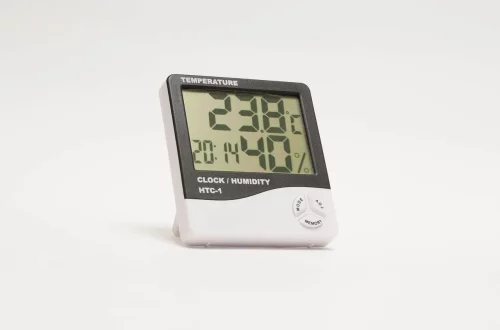
How Many Pounds Are in a Cup of Dog Food? A Simple Guide
When it comes to caring for our beloved canine companions, one of the most common questions pet owners have is about dog food measurements. Whether you’re transitioning your dog to a new brand, monitoring their weight, or simply trying to ensure you’re providing the right portion sizes, understanding how to convert between measurements can be crucial. The relationship between volume and weight can be confusing, especially since different types of dog food can vary significantly in density.
This uncertainty can lead to overfeeding or underfeeding, both of which can have significant implications for your pet’s health. For instance, if you’re using a cup measurement but aren’t aware of how many pounds that equates to for the specific type of dog food you’re using, you might be inadvertently affecting your dog’s weight management. With so many brands and formulations available on the market, it’s essential to have a basic understanding of these conversions.
Moreover, the nutritional content of dog food can also vary widely, making it even more important to get the serving sizes right. Proper measurements can ensure that your dog receives the appropriate balance of nutrients, which can contribute to their overall health and well-being. In this guide, we aim to clarify how to properly measure dog food, enabling you to provide the best care for your furry friend.
Understanding the Basics of Dog Food Measurements
To grasp how many pounds are in a cup of dog food, it’s important to understand the basic principles of measurement. In the culinary world, volume and weight are two distinct concepts. A cup is a measure of volume, which refers to how much space a substance occupies, whereas a pound is a measure of weight, indicating how heavy that substance is.
When it comes to dog food, various factors can influence the conversion between these two measurements. The type of ingredients used in the dog food—such as grains, meats, and fillers—plays a significant role in its density. For example, dry kibble typically has a different weight per cup compared to wet food or raw diets.
Generally speaking, one cup of dry dog food weighs approximately 4 to 8 ounces, depending on the brand and formulation. This means that there are 2 to 4 cups of dog food in a pound. However, it is crucial to check the packaging of your specific dog food for more accurate information. Many brands include serving size recommendations and weight equivalencies, which can serve as a helpful guide.
Another factor to consider is the type of measuring cup you use. Standard measuring cups used in cooking can differ slightly in size and shape. For the most accurate measurement, consider using a kitchen scale to weigh out the food directly. This way, you can ensure that you’re providing the exact amount your dog needs based on their size, activity level, and dietary requirements.
How to Measure Dog Food Accurately
Accurate measurement of dog food is vital for maintaining your pet’s health. Many pet owners rely on standard measuring cups, but this method can sometimes lead to inaccuracies. Using a kitchen scale to weigh the dog food is often recommended for precision.
When measuring dry food, start by placing a bowl on the scale and resetting it to zero. Then add the food until you reach the desired weight. This method eliminates the guesswork and ensures you are providing the correct amount based on your dog’s needs.
If you prefer to use cups, be aware of the potential for variation. For dry dog food, a level cup is considered a standard measurement, but scooping can lead to heaped cups, which can significantly alter the weight. If you’re unsure about the weight equivalency, refer to the packaging for guidance.
Moreover, consider your dog’s specific dietary needs when measuring their food. Different breeds, sizes, and activity levels will require different amounts of food. For instance, an active dog may require more calories and therefore more food than a less active dog of the same breed.
Always consult with your veterinarian to determine the right amount of food for your dog’s specific needs. They can provide personalized recommendations based on your pet’s age, weight, and health status. Remember that overfeeding can lead to obesity and related health issues, while underfeeding can result in malnourishment.
Factors Influencing Dog Food Weight
Several factors can influence the weight of dog food in a cup. Understanding these factors can help you make informed decisions about how much to feed your dog.
1. **Type of Food**: As previously mentioned, the type of dog food significantly affects its density. For instance, kibble tends to be lighter than canned food or raw diets. Additionally, some brands use more air in their kibble, which can make it less dense and lighter in weight.
2. **Moisture Content**: The moisture content in dog food can also impact its weight. Dry dog food generally has a low moisture content, while wet food contains a higher percentage of water. This means that a cup of wet food will weigh significantly more than a cup of dry kibble.
3. **Ingredient Composition**: The ingredients used in the dog food formulation can also play a role. Foods with higher protein content or those that include denser ingredients like meats and grains may weigh more per cup compared to those that contain fillers or less dense components.
4. **Serving Suggestions**: Different brands often provide serving suggestions on their packaging. These suggestions are typically based on the weight of the dog and can guide you in determining how many cups equate to a certain weight.
5. **Storage Conditions**: Lastly, how you store your dog food can affect its weight as well. If the food has been exposed to air or moisture, it may clump together, affecting how much fits into a cup. Always store dog food in a cool, dry place to maintain its freshness and quality.
Tips for Feeding Your Dog the Right Amount
Feeding your dog the right amount of food is essential for their health and well-being. Here are some tips to help you ensure that you’re providing the appropriate portions:
1. **Follow Feeding Guidelines**: Most dog food packages include feeding guidelines based on your dog’s weight. Use these as a starting point and adjust according to your dog’s individual needs.
2. **Monitor Weight Regularly**: Keep an eye on your dog’s weight and body condition. If you notice significant weight gain or loss, consult with your veterinarian to adjust their diet accordingly.
3. **Use Measuring Tools**: Invest in a good-quality kitchen scale or measuring cups. These tools can help you accurately measure your dog’s food, ensuring they get the right amount every time.
4. **Consider Activity Level**: Take your dog’s activity level into account when determining how much to feed them. Active dogs may require more food, while less active dogs may need less.
5. **Consult Your Veterinarian**: Regular check-ups with your veterinarian can help you stay informed about your dog’s dietary needs. They can recommend specific brands or formulations based on your dog’s health status.
By incorporating these tips into your feeding routine, you can help ensure that your dog maintains a healthy weight and receives balanced nutrition.
In conclusion, understanding how many pounds are in a cup of dog food is crucial for any dog owner. The relationship between volume and weight can be influenced by several factors, including the type of food and its ingredients. By measuring accurately and consulting with your veterinarian, you can provide the best possible care for your furry friend.
**Disclaimer**: This article is for informational purposes only and should not be considered medical advice. For any health-related concerns regarding your pet, please consult with a veterinarian.




